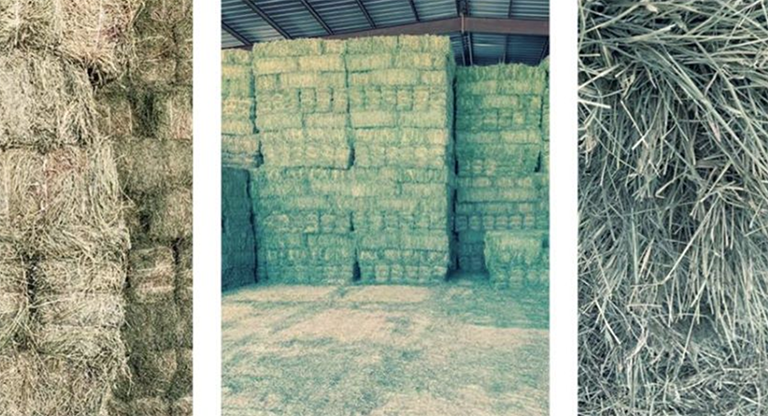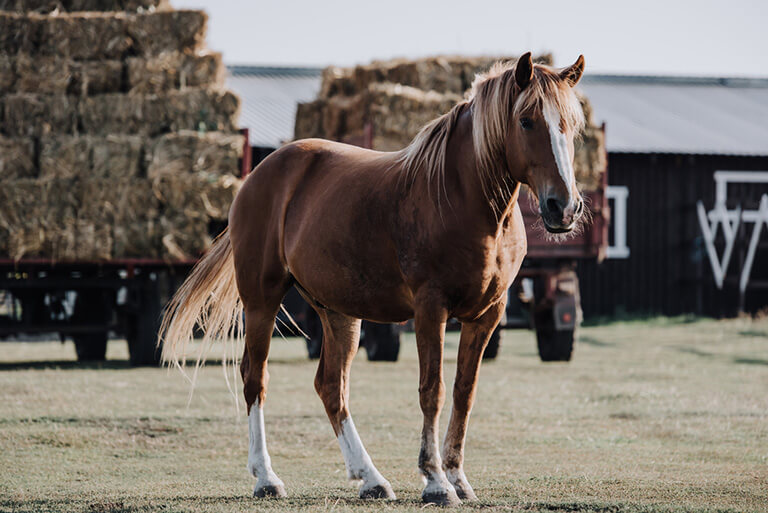We have the lowest delivery fees

Which Cutting of Hay Is Best for Horses?
As a horse owner, you know that asking around which is the best hay for a horse’s diet might not result in a particular response. That is because there are many opinions on what horses should eat and how this will reflect in their performance. Should you feed them grass hays or legume hay? What about alfalfa hay or Bermuda hay? Should you let them have it all the time? In the end, it all comes down to trying different things and seeing what works better for your animals. When you are choosing hay for horses, you might come across the choice of cutting. Should you choose first cut, second cut, or third cut? What are the differences, and which is the best one? Let us help you find the answers to these questions.

Best Hay for Horses
Depending on the age of hay at the time of harvest, it will have different nutrient content. That said, hay of early maturity is good quality, highly palatable, leafy, and has optimal nutritional value. On the other hand, late maturity hay is not as leafy and has thicker stems. What you should take away from this is that with maturity, hay becomes less digestible, palatable, and less abundant in protein, while at the same time having more fiber. So, if you aim for feeding your horses with the most nutritious hay, then the best option would be to harvest soon after some flowers become visible on the plants.
The type of hay you choose will depend on your horses and the goals you have for their performance. Horses that need more nutrient density from the feed are those that are still young growing horses, are performance horses, as well as lactating mares. So you can feed them early maturity hay. At the same time, late maturity hay will be a good choice for horses who eat a lot but do not require high nutrient density in the feed.
As you are choosing what hay to get for your horses, do not only rely on the cut. Think about maturity, as mentioned above, and also about weeds and moisture. Horses will not eat the hay that has a lot of weeds mixed in, plus there is no added nutrition in them. Moreover, excessive moisture in the hay as a result of rainy weather, for example, could cause mold to grow. First cutting has more grass mixed in, while second smells sweeter, and third is rich and thick. Here is more about each of them in detail.

First Cutting
First cutting of hay is the one harvested first in the year from the field before it blooms. This cutting is good for horses. There is a lot of fiber, so it is nutritious, plus it is easy to eat because the stems are flexible and thin. At the same time, first cutting does not have as much protein or fat as second or third, so it might not be the best hay for horses who are active and do not need to lose weight. First cut hay often creates problems when rain delays happen. As a result, harvest can occur when hay is already in the late maturity stage, or when there are more weeds mixed in. So, before buying first cut hay, check for weeds and excess moisture.
Second Cutting
This is the most common cutting of hay that horse owners give to their horses, and for a good reason. It is greener and more substantial, with more leaves and a sweet smell. This hay contains a lot of protein and fat, so it is excellent for horses that exercise. Still, it is not as rich in fiber as second cutting, so consider that before choosing the best hay for horses. However, still, the second cutting is the optimal solution for adult horses. Rain delays typically do not affect second cut hay. However, it should still be harvested before advanced maturity to remain nutritious and palatable.
Third Cutting
Hay of the third cutting is thick, green, and very nutritious, containing more legumes and high protein and fat content. It is also leafy and soft, so the horses will find it appealing. However, it lacks fiber compared to first and second cuttings, and horses need a lot of fiber, plus it can be difficult for them to digest. You can solve that by mixing some third cut hay with first or second cuttings.

Choosing the Best Hay for Horses
All in all, keep in mind that any cutting can deliver good-quality hay for your animals. So, what is the best hay for horses depends more on its quality than just the cutting. Check a few bales of hay before you purchase it for mold, insects, weeds, and dirt. If you want to make sure of its nutrition content, you can also arrange hay analysis. The most common choice of hay is second cutting, but first cutting is also good for horses, plus it is usually cheaper than the other two.
Choose hay that is soft, green, and leafy, with thin stems, so it is easier for horses to eat. If you notice a moldy or dusty smell coming from the hay, avoid it – it might make your horses sick. The same goes for the hay where you see signs of dirt, trash, or weeds. Reject bales if they feel warm to the touch because this might be a sign of moisture and mold. Check carefully for any signs of insects.
The best way to make sure that you are getting high-quality hay is to order it from a reliable supplier that will provide hay from the say fields during the year. This will help you make sure that your horses will not get sick from switching feed or changing nutrition. Avoid changing types, fields, and quality of the horse hay to promote good health of your horses. Once you purchase hay, store it properly in a dry and covered area to protect it from changing weather conditions. Get only what is best for your horses.


Leave a comment